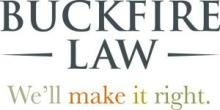Birth injury lawsuits demand significant compensation for both the child and family. A common condition that gives rise to litigation is cerebral palsy. Many lawsuits alleged that medical negligence before, during, or after childbirth was the cause of the condition.
Cerebral palsy (CP) is a medical condition that requires long-term supportive care services. Those with cerebral palsy often have other associated medical conditions, including cognitive challenges, vision loss, hearing impairment, and seizures.
The family of a child with cerebral palsy is likely to incur significant expenses related to the ongoing need for medical care, special education services, developmental assistance, and assisted living. This child will also suffer a lifetime of lost earnings and will require care when the parents or guardians are no longer able to provide it.
According to the Centers for Disease Control, among children enrolled in Medicaid in 2005, medical costs were highest for children with both cerebral palsy and intellectual disability. The CDC that in estimated lifetime cost to care for an individual with CP is nearly $1 million in 2003 dollars. With inflation and the increase in medical care costs, the amount is substantially higher in today’s dollars.
Many states currently have artificial caps, or damage limits, on medical malpractice cases. These caps often apply only to non-economic losses, like pain and suffering or disability, and not to past, present, or future economic damages. Economic damages can include medical expenses, rehabilitation costs, lost earnings, home and vehicle modifications, and other financial losses.
Lawyers handling birth injury cases have expertise in projecting economic damages to maximize the settlement for the child and family. Typically, the attorney will retain the services of a Life Care Planner for this purpose. These experts evaluate every aspect of the child’s needs and project the costs over the life expectancy of the child.
There are several main components of a Life Care Plan. These plans are subject to great scrutiny by defense lawyers so it is essential to have a qualified expert. It is also necessary to have both medical testimony and medical literature to support the opinions. Otherwise, defense counsel will attack the opinions and may even move the court to prevent its admissibility at trial.
The main components of the plan include different categories. First, the need for routine medical care for the child. This includes listings of regular visits, evaluations, and examinations by multiple medical specialists. Some exams are needed on an annual basis, while others require greater frequency. The plan will itemize the cost of these visits.
In addition to physical exams, counseling services for the child and parents are also necessary. These therapy services help the family deal with adjustment issues in caring for a child with special needs. Private counseling sessions are in addition to services provided by the government and the school district.
Medically, regular diagnostics are important to prevent future complications in the child. Annual tests essential for the treatment and monitoring protocol. These tests can include bloodwork, labs, swallow studies, radiology, and other diagnostics. These costs are included in the plan, as well as medical procedures necessary for the child. Additionally, expenses for prescription drugs, vitamins, and other supplements are factored into the plan. Many expenses are not covered by health insurance or have sizable co-pays.
Multiple therapies are also needed as part of the rehabilitation process over a lifetime. These include physical therapy, occupational therapy, speech therapy, and vision therapy. The cost of these therapies, many of which are not provided by the school system, is a significant expense.
Another major cost is for durable medical equipment and supplies. These can include motorized wheelchairs, special car seats, positioning devices, specialty beds, bathing devices, and even Hoyer lifts and slings. Each of these supplies has its own limited lifetime use and must be replaced due to wear and tear or because of the growth of the child over the years.
Finally, a modified transportation van with a lift to accommodate a wheelchair is often needed. And, of course, suitable housing to accommodate the special needs of the child and family is necessary. Homes require ramps, specialized baths and showers, and other modifications so the child can be cared for in a livable environment.
The Life Care Plan and the other economic damages lay the foundation for an attorney to demand significant compensation from the allegedly negligent medical providers. These damages, when combined with the non-economic losses of the child and parents, make a persuasive case for obtaining both financial security and lifelong care for the child.
Sources:
https://www.cdc.gov/ncbddd/cp/data.html
Certified Nurse Life Care Planner (CNLCP)
American Association of Certified Nurse Life Care Planners (AANLCP)
Case Management Society of America (CMSA)




 />i
/>i
